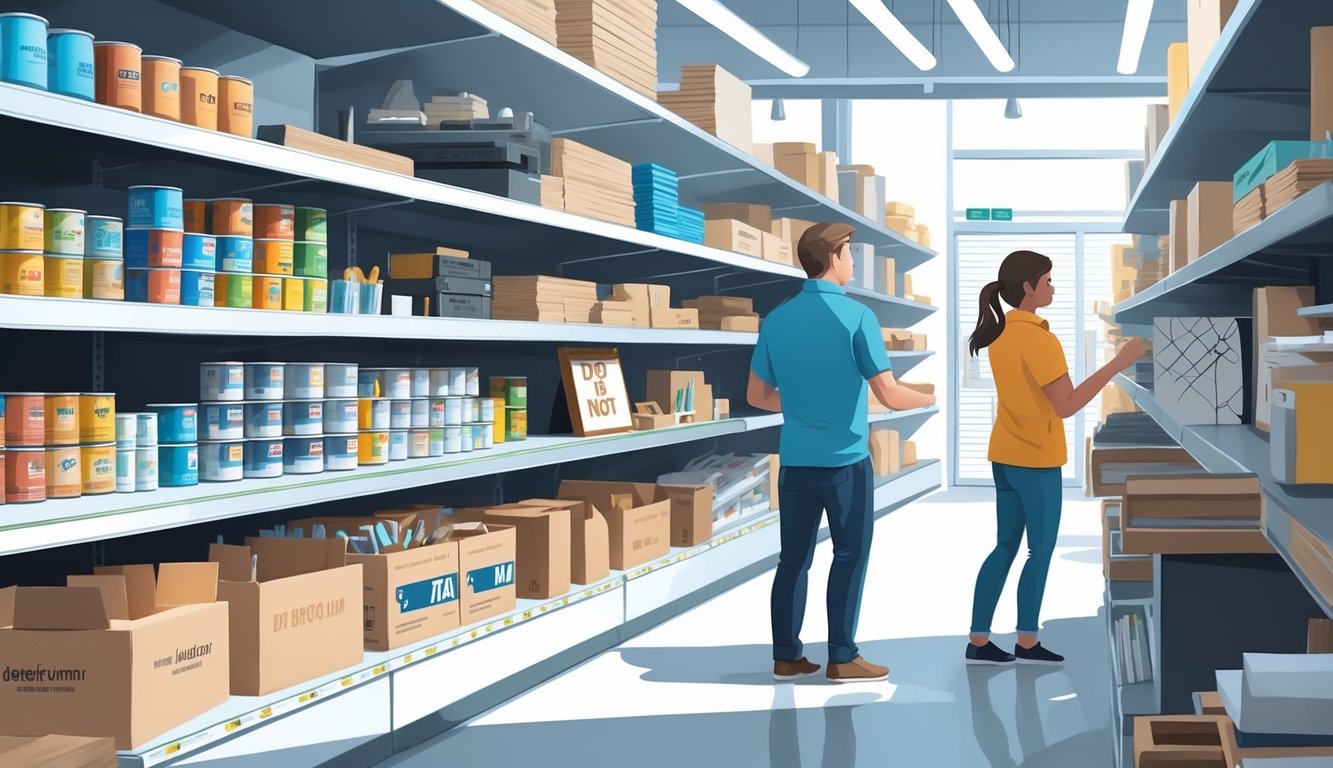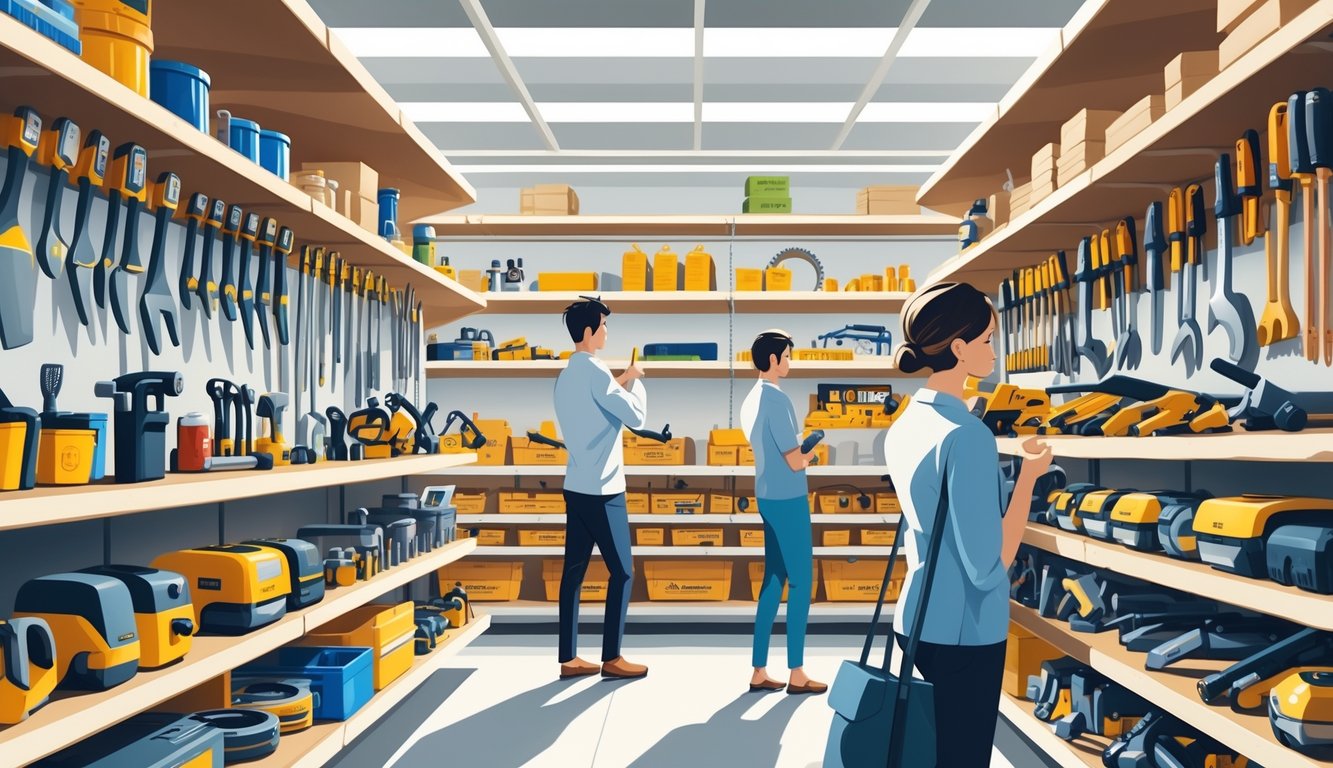
Alright, so here’s what’s still bugging me: retailers—every flavor, big or small—hide behind these shiny “easy” kits and just cross their fingers you don’t figure out how basic a floating shelf or a built-in bench actually is if you skip their markup. I mean, a vendor once told me DIYers usually take on 7-12 different home projects themselves (is that even true? who tracks this stuff?), which just means stores lose out on all those sweet, easy sales. If you knew which projects retailers secretly dread you figuring out, you’d probably save a ridiculous amount of money, and honestly, it’s wild how a chunk of plywood and two random fasteners can pull off some seriously high-impact stuff. The best part? Every time some hardware rep brags about a new tool, I’m already thinking of a dozen things I wish more people realized you can do by hand—no “expert” needed, no big spend.
Watched my neighbor cobble together a closet system that looked designer with just a circular saw, a self-leveling laser, and a YouTube video he barely paid attention to (seriously, he watched it at double speed). Meanwhile, someone else is out there paying triple for the same thing because they fell for a fancy in-store display. And don’t even get me started on how most stores never stock everything you need in one trip. Is that on purpose? Feels like it. The real kicker: 94% of young adults are already ditching brand-name shops for big-box stores or online bundles, so maybe retailers’ little secrecy act is falling apart anyway.
People keep jumping on these “mini projects” like peel-and-stick tile or swapping out cabinet pulls for resale—wish someone had told me ages ago that the classic custom storage bench (the one stores love to overcharge for) is not some mystical thing. Learned the hard way when a $30 “pro” hinge snapped under the first heavy box I tossed in. Some projects just fly under the radar because if every DIYer caught on, stores would be stuck with a warehouse full of pre-made junk nobody wants.
Why Retailers Guard DIY Project Ideas

Ever notice how a single weird adhesive costs more than a whole bag of drill bits? That’s the trick—home improvement retail is allergic to transparency. Most people think the “secret sauce” is some magical sales script, but no, it’s usually a $5 caulk gun quietly making more money than all the trending projects combined.
Hidden Margins in Retail
So I’m staring at a wall of weird sanding pads—what’s the deal? It’s never what it looks like. Retailers cling to certain project “secrets” because, let’s be real, the oddball stuff has the fattest margins.
Multipurpose sealants, random-sized dowels—those are the cash cows. Not the flashy power tools or the bulk bins of hardware. Who’s buying a hundred decorative screws by accident? Nobody. A 2022 Freddie Mac report said DIY project activity jumped over 4%, but it’s the overlooked finishing supplies that really move inventory and quietly pad profits.
Someone once told me, “Accessories sell the project, not the kit.” Whoever’s cornered the market on weird brackets or oddly specific hooks is making bank. The less you know about workarounds, the more their hidden margins stay safe.
How Knowledge Empowers DIYers
Show someone a YouTube hack for leveling subfloors with door shims and poof—no more $60 repair kit. That’s when retailers start sweating. Every time a shopper learns a new trick—especially one that nukes a carefully guarded “category”—they get closer to not needing the store at all.
Spend five minutes poking around recent home improvement trends and you’ll see guides for buying bulk materials and swapping in generic parts everywhere. Venveo’s experts say DIYers tackle 7–12 projects versus pros’ lower count, which just means faster learning and, yeah, shrinking margins for stores.
Nobody says it, but the second a hack for upcycling pre-finished moulding gets out, retailers groan. Know-how just cuts right through the old-school supply chain—straight from warehouse to your workbench, skipping the store. And, honestly, someone always breaks a tape measure and turns it into a coat hook. That’s peak DIY.
Essential Tools Retailers Wish You’d Skip

Every time I’m back at the hardware store, receipts everywhere, I see shelves covered in gadgets that supposedly everyone “needs”—but they just gather dust at home. There’s this idea that skipping certain “pro” tools makes you an amateur, but honestly, it just fattens store profits and slows you down.
Secret Must-Have Tools for DIY Home Improvement
Digging through the toolbox (usually with a half-eaten granola bar stuck behind the drill bits), I keep wondering who decided nobody should talk about the auto-lock tape measure. While retailers push those massive “combo sets” with twenty screwdrivers, I’ve noticed a lot of female DIYers rave about compact, click-in multi-head precision screwdrivers—no more busted knuckles or impossible angles.
Laser levels? Ignore the sale signs, go by reviews. The tiny ones save you from the nightmare of uneven shelves in one go. Some pro online said 85% of crooked gallery walls are just a spirit level and a steady hand away (Business Insider, maybe? I forget). But good luck finding the $15 model when the $120 one is front and center. At checkout, nobody’s going to mention DIY essentials that quietly save your sanity like magnetic wristbands for screws or mini LED penlights for dark corners. And if a retailer tells you a flexible shaft bit holder isn’t worth it, they’ve never dropped a screw behind a radiator at midnight.
How to Save on Quality Tools
Buying everything “contractor grade” is just aggravating—why is there always a 10-piece set three aisles away with the same specs for half the price? I refuse to overpay for hammers that chip right after the warranty dies. Grab the 16oz claw hammer with a vibration handle because a real estate agent friend said stagers use it for those “before and after” shots. Or maybe it’s just the only one I haven’t lost.
Honestly, a side-by-side of what retailers call “essential” versus what you actually use (super glue, adjustable wrenches, hex keys) would make more sense than those huge aisle displays pushing corded drills when a small, solid impact driver lasts five times longer. Bulk tape or utility blades? Never ends up saving money if you don’t actually need them. Tool libraries—found one last year, life-changing. And does anyone ever finish a project using every bit in the 40-piece set? Doubt it.
Oh, and if someone tries to talk you into plastic putty knives because “they’re cheaper for beginners,” just try both. The plastic one will snap. It always does. Not that I’m holding a grudge.



